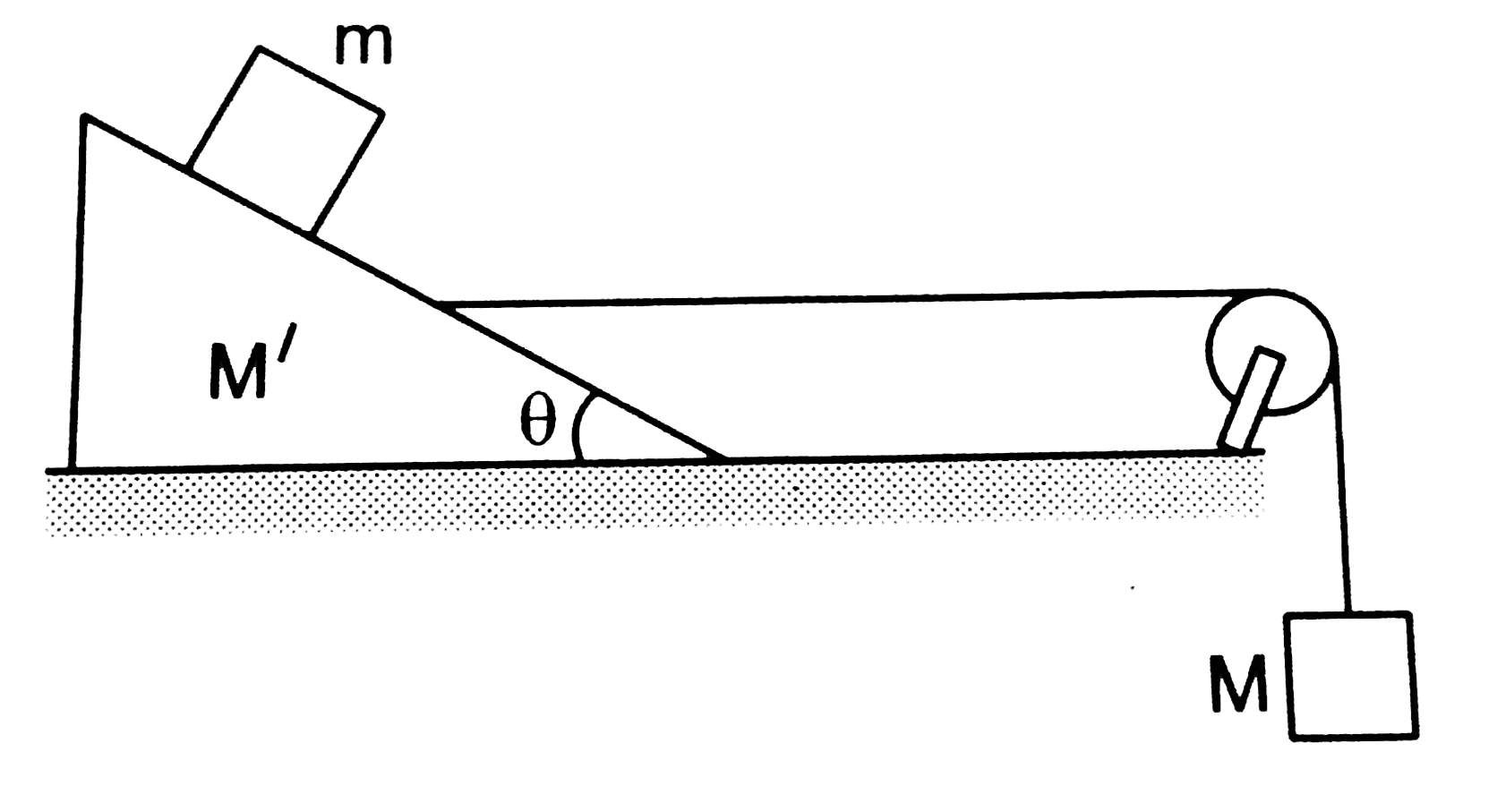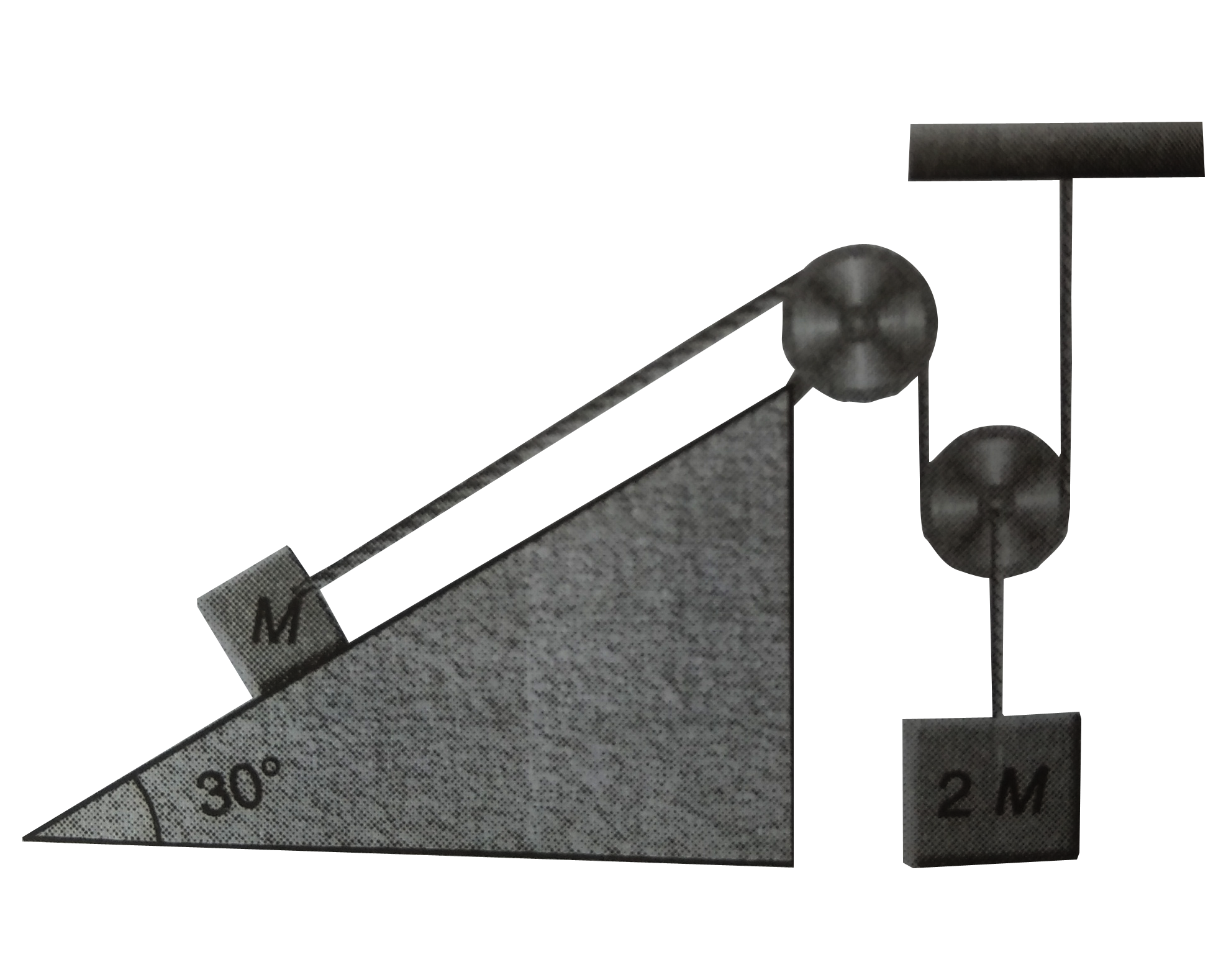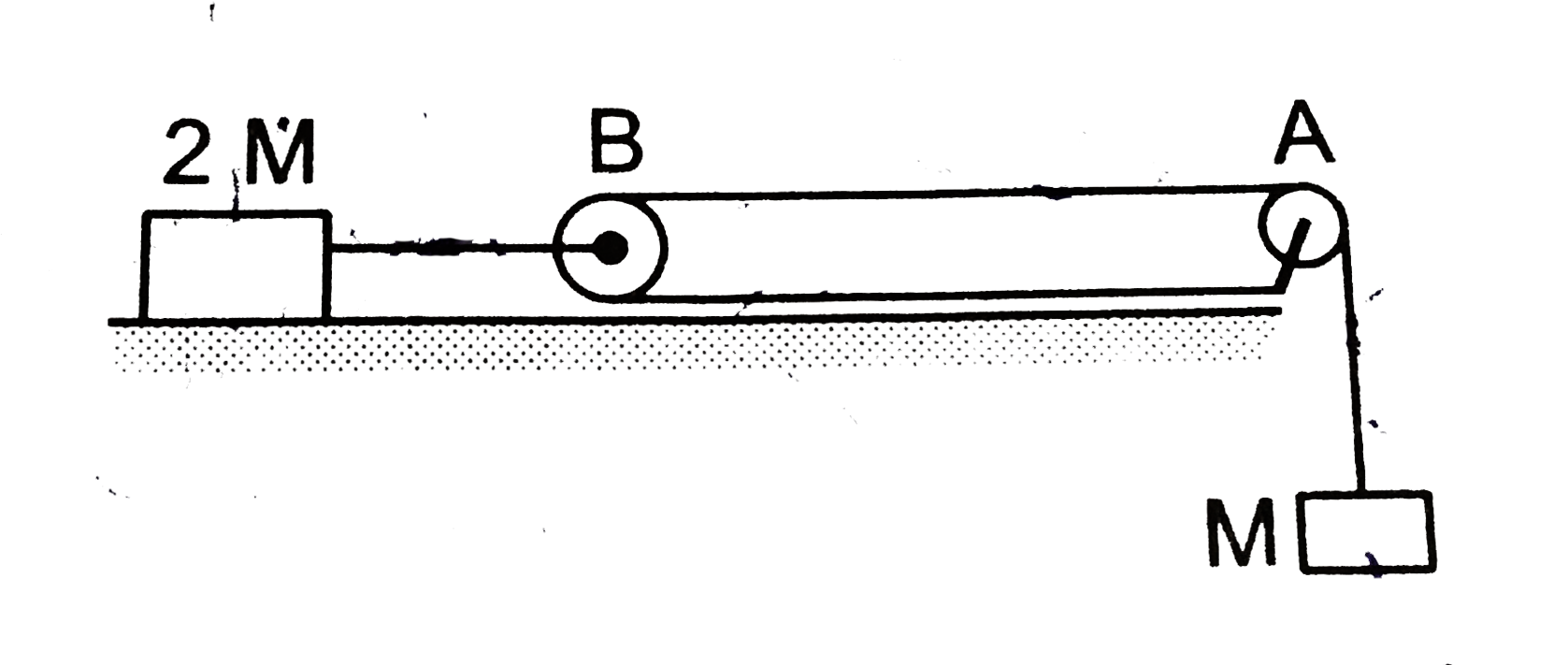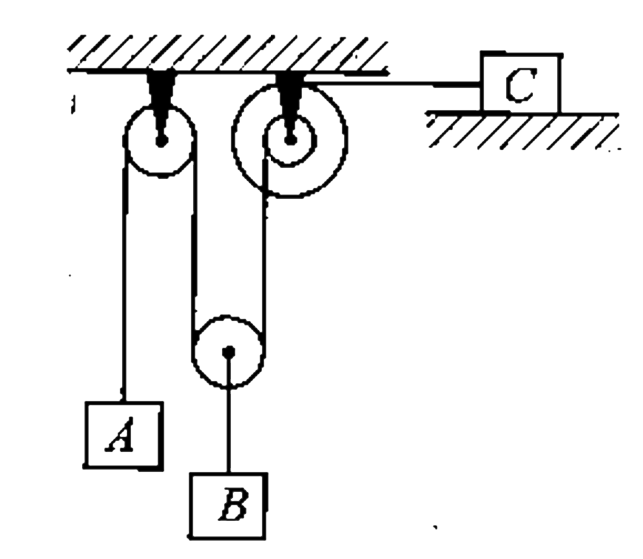Find the acceleration of the blocks A and B in the this situations shown in figure.

Free body diagram

The block m does not slip over M'
From ure i. T−Nsinθ=M'a ………….i.
Fromureii,Ncosθ=Mg…..ii.
Nsinθ=Mg……….iii
Fromureiii,Mg−T=Ma.......iv.
From equations i. and iv
Mg−Nsinθ=(M'+M)a

From equation (ii),
Mg−Mgtanθj=(M'+M)a
and a= g tan theta
Mg−Mgtanθ=(M'+M)gtanθ
:. M= (M'+M)/(cot theta -1).
Topper's Solved these Questions
- BOOK - HC VERMA ENGLISHCHAPTER - NEWTON'S LAWS OF MOTIONEXERCISE - Questions for short Answer17videos
NEWTON'S LAWS OF MOTION
- BOOK - HC VERMA ENGLISHCHAPTER - NEWTON'S LAWS OF MOTIONEXERCISE - Objective -29videos
NEWTON'S LAWS OF MOTION
- BOOK - HC VERMA ENGLISHCHAPTER - LAWS OF THERMODYNAMICSEXERCISE - All Questions64videos
LAWS OF THERMODYNAMICS
- BOOK - HC VERMA ENGLISHCHAPTER - PHYSICS AND MATHEMATICSEXERCISE - Question for short Answer14videos
PHYSICS AND MATHEMATICS
Similar Questions
Find the acceleration of the blocks A and B in the three situations shown in figure.
 View Solution
View SolutionFind the acceleration of the block of mass M in the situation shown in figure. All the surfaces are frictionless.
 View Solution
View SolutionFind the acceleration of the block of mass M in the situation shown in figure. All the surfaces are frictionless.
 View Solution
View SolutionFind the acceleration of the block of mass M in the situation shown in figure. All the surfaces are frictionless.
 View Solution
View Solutionfind the acceleration of the block of mass M in the situation shown in figure. All the surfaces are frictionless and the pulleys and the string are light.
 View Solution
View Solutionfind the acceleration of the block of mass M in the situation shown in figure. All the surfaces are frictionless and the pulleys and the string are light.
 View Solution
View SolutionFind the acceleration of the A and B in the situation show in the figure
 View Solution
View SolutionFind the acceleration of the A and B in the situation show in the figure
 View Solution
View SolutionFind the acceleration of each block in the situation shown in the figure. All the surface are smooth and the pulleys and sttings are light.
 View Solution
View SolutionFind the constrained relation among the acceleration of blocks A, B and C for the situation shown in figure-1.97. Ratio of radii of step pulley is given as 1:2.
 View Solution
View Solution

